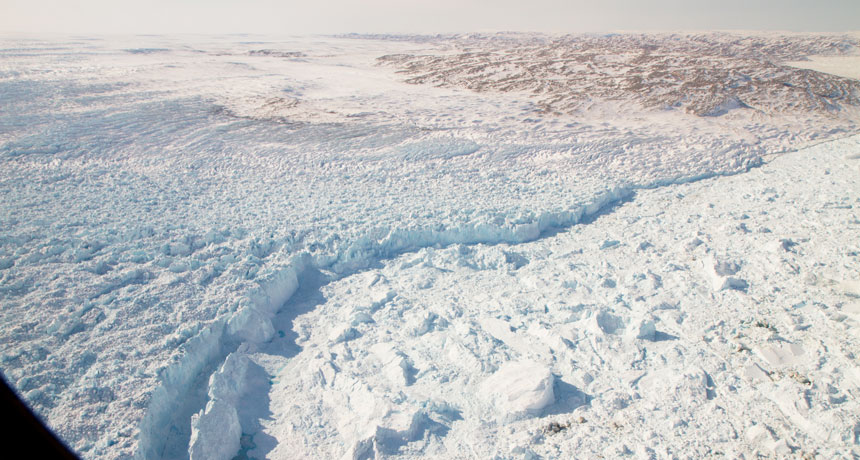Humans are driving climate change, federal scientists say
New U.S. report tallies impacts from hottest-ever years to extreme weather threats

RETREATING ICE Jakobshavn Glacier in western Greenland (its front edge, where ice is calving into the ocean, shown here in 2012) is one of the world’s fastest-shrinking glaciers. A new U.S. report increases projections of average global sea level rise due to accelerating ice sheet melting if greenhouse gas emissions continue unabated.
Jefferson Beck/NASA






